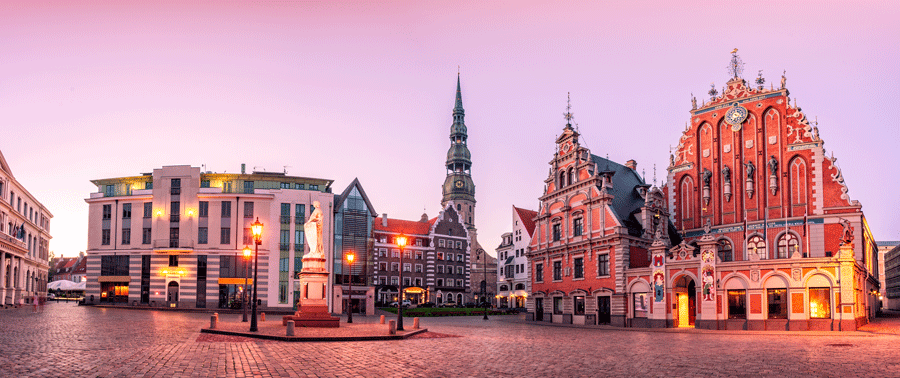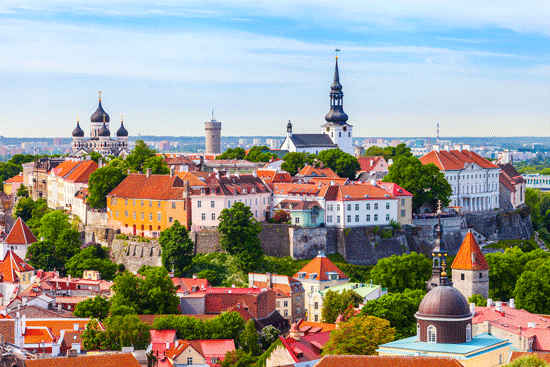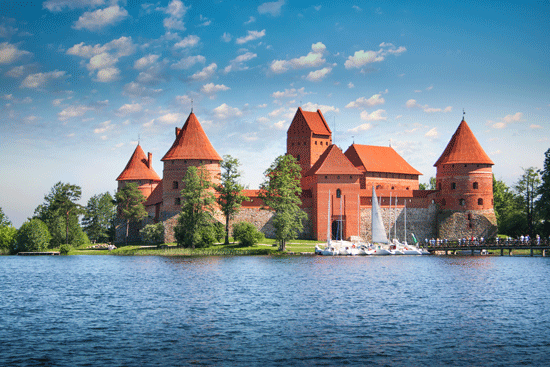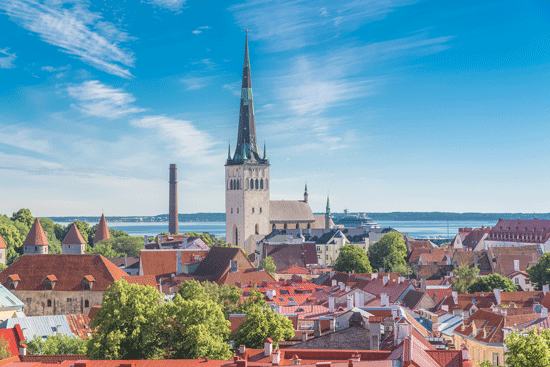
These Historic Buildings Are a Window Into the Baltics

August 29, 2019
4 minute read
On the rocky coasts of the deep azure Baltic Sea lie the Baltics. The people’s warm-hearted and neighbourly demeanor belies a hidden strength – they stood against the oppression of both the Nazis and the Soviets, after all.
Estonia, Latvia, and Lithuania have maintained a political comradery that you can find echoed in the people there. Dark forests give way to elegant cities, where opulent architecture has been developed since the Iron Age, infusing a deep sense of history in every building.
These countries were walled off to most of the world until the 1990s, but the Baltics are brimming with hidden gems waiting for travellers like you to uncover.
While Baltic nations share pieces of their history, the unique culture of each country shines through its regional architecture. Keep reading for some Baltic buildings that offer a window to the past.
Latvia: Art Nouveau
In Latvia, specifically, many buildings are influenced by Art Nouveau: the idea that decorative and fine arts can be brought together, finding and infusing art into all of our surroundings.
The movement dates back to the early 20th centuries, and will surely charm you today. This opulent style of architecture is characterized by intricate decorations inspired by the design of natural forms like plants and flowers.
Riga, the nation’s capital and beating urban heart, is considered “Northern Europe’s Art Nouveau Capital.” Stroll through Old Town Riga and you’ll see why. The streets are lined with a centuries-long timeline of architectural artifacts, including many Art Nouveau structures. Many of Riga’s Art Nouveau buildings date between 1904 and 1914.
Travel Tip: Visit the Art Nouveau Museum in Riga, which showcases the iconic art movement. The museum itself is located in the former home of one of Latvia’s best Art Nouveau architects, Konstantīns Pēkšēns, who designed more than 200 such buildings.
Lithuania: Castles
In ancient times, Lithuania was known for its wooden castles, which did not survive the tests of time and erosion. Today, many of Lithuania’s most famous castles can be identified by red Gothic brick cones atop round stone towers. From a distance or up close, you’ll feel like you’re stepping into a storybook.
Step into these fairytale lands at the Trakai Island Castle, embraced by the coastlines and pines of Lake Galvé. Construction and updates to the castle took place between the 14th and 15th centuries. It was built by Kęstutis, a medieval leader of Lithuania. It is the only castle built on a lake in all of Eastern Europe.
The village of Trakai is a charming medieval village, presenting a timeless view of Lithuanian life in the area. The mainland town also has another castle: the Trakai Peninsula Castle, built to accompany the Island Castle as a defensive system.
Travel Tip: Stroll the castle grounds, visit the Trakai History Museum, and explore the town of Trakai for a full medieval experience of Lithuania.
Estonia: Historic churches
Tallinn, the capital city of Estonia offers plenty of opportunities to admire medieval churches (and even older ones). The city’s architecture showcases ages of cultural influence, from an ornate Russian Orthodox cathedral, to charming bohemian homes.
St. Olaf’s Church, boasts striking views and rich history. It is the tallest medieval building in Tallinn, built during the 12th century. The tower has been hit by lightning 10 times, and rebuilt bigger and better several times. Its Nordic influence is evident; it is dedicated to King Olaf II of Norway, and is believed to have been the center of the Scandinavian community during the 13th century. Step out onto St. Olaf’s viewing platform, and you’ll see another beautifully historic church worth a visit.
Also located in Old Tallinn, the Alexander Nevsky Cathedral is an opulent Orthodox cathedral. It has clear Russian influence – with an architectural style resembling St. Basil’s Cathedral in Moscow, it’s no surprise it was designed by a late 19th century Russian architect.
After many churches were left in disrepair during the Estonian occupation by the Soviet Union, the Alexander Nevsky Cathedral and others were meticulously resorted in the 1990s.
Travel Tip: For the sweeping views of Tallinn and its Old Town churches, visit the Kohtuotsa viewing platform atop Toompea Hill. You’ll be able to spot a mix of centuries-old spires and modern city buildings. Don’t forget your camera!




